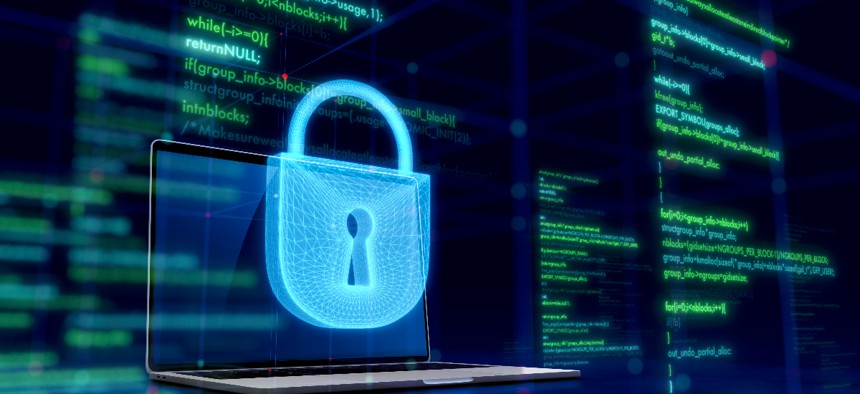CISA Tells Agencies What to Prioritize to Meet Cybersecurity Log Mandate

dem10/Getty Images
The guidance document also explains how CISA and the FBI will work with agencies to investigate cybersecurity incidents.
As federal agencies work to meet cybersecurity records mandates issued in 2021, the government’s lead cybersecurity department released general guidance to help agency leaders prioritize parts of what can be a costly and resource-intensive implementation.
The Office of Management and Budget issued a memo in August 2021 telling agencies to create and maintain certain network traffic data that can be useful in the aftermath of a cybersecurity incident. The memo—"Improving the Federal Government’s Investigative and Remediation Capabilities Related to Cybersecurity Incidents”—requires agencies store cybersecurity event logs for at least 30 months and full packet capture date, or PCAPs, for 72 hours.
The latter requirement has raised some concerns among cybersecurity experts who note that PCAP data sets are large—resulting in high data storage costs—and are often not as valuable on encrypted traffic. Add to that the low likelihood that a security breach would be detected within the 72-hour window for maintaining those records, and the potential value of PCAP data for forensics doesn’t always justify the cost.
But with a mandate in place, agencies are required to implement PCAP and maintain cybersecurity logs. So, the Cybersecurity and Infrastructure Security Agency developed a brief guidance document to help agencies prioritize implementation to effectively reach the lowest baseline in time for OMB reviews.
The guidance was offered to agencies in December but was expected to be released publicly Monday.
“Agencies should make risk-informed decisions about where log collection is most beneficial for improving cybersecurity incident detection and investigation,” the document states. “CISA recommends that agencies prioritize high value asset (HVA) systems, high impact systems, and the enterprise IT network.”
CISA suggests focusing on “identity providers like Azure Active Directory or Active Directory,” and “internet-accessible systems—e.g., web applications—and systems that interact with the internet regularly.”
The document offers a tiered list of the kinds of network activity that should be prioritized for logs, as well as offering tips for keeping PCAP data size low and, in turn, keeping costs down.
“Agencies can minimize the size of collected PCAP by filtering out encrypted traffic—Transport Layer Security, etc.—and collecting PCAP only at central points—e.g., first hop in/out of an agency-managed network,” the document states, acknowledging that captures of encrypted packets will only offer limited information for forensics purposes, such as the size of the packet and its destination but not its contents.
The document also clarifies that agencies do not need to break encryption to be in compliance.
“While maturity level 2 requires ‘full packet capture data: decrypted plaintext and clear text,’ the Inspection of Encrypted Data section of Table 3 states, ‘if agencies do not perform full traffic inspection, they should log the metadata available to them,’” CISA officials wrote in the FAQ section. That said, “If an agency implements a decryption capability, they need to log decrypted packet capture.”
Separate from the document, a CISA spokesperson told Nextgov the decision to require agencies to store PCAP data for 72 hours was about balancing the value to forensic investigations against the expense of storing that data.
“A 72-hour retention time means the PCAP data can be used to inform the investigation of network or host-based intrusion alerts—e.g. to confirm an alert is truly malicious—while limiting the overall storage costs,” the spokesperson said in an emailed statement.
The spokesperson also noted the importance of the other event logs required under the mandate, which are to be retained for at least 30 months.
“In addition, many of the logging types required by [the OMB logging memo] M-21-31 provide significant value in incident response even where PCAP is no longer available, such as process creation, user sign-in, Domain Name System (DNS) queries, and firewall logs,” they said.
The document also offers a glimpse at how agencies will coordinate with CISA and the FBI after a cyber incident has been identified, including creating new user accounts for agents.
“When a security incident occurs, CIOs will provision accounts within an agency environment and provide CISA and FBI officials credentials granting access to data by the same means as agency employees,” the document states.
CISA hopes to automate some of that process in the future, including “explor[ing] approaches to allow queries of the data from outside the agency, or approaches that will allow agencies to send data continuously to CISA,” so long as those methods don’t hamper the performance of agency networks.
Prioritization list
With an understanding of “the technical and operational obstacles to collecting and storing 72 hours of PCAP,” CISA offered a specific, ordered priority list of the types of events that should be captured to meet the lowest level of policy compliance:
- Identity, Credential, and Access Management (ICAM); Privileged ICAM (PICAM) event types, specifically:
- Manage/track changes in attributes and credentials
- Track usage of credentials
- Operating systems (Windows/Linux/Mac where applicable) event types:
- Process creation
- Remote terminal or equivalent access and log off (success/failure)
- System access and logoff (success/failure)
- Scheduled task changes
- Service status changes (start, stop, fail, restart, etc.)
- Active network communication with other hosts
- Command-line interface (CLI)
- PowerShell execution commands
- Windows Management Instrumentation (WMI) Events
- Installation or removal of storage volumes or removable media
- Network device infrastructure event types:
- Domain Name System (DNS) query/response logs
- Dynamic Host Configuration Protocol (DHCP) lease information including media access control (MAC) address, IP address
- Firewall logs
- Cloud environments (general logging):
- Any activity on breakglass account(s) (which should never have to be used)
- Amazon Web service (AWS) event types:
- AWS CloudTrail
- Cloud Azure
- Azure Active Directory logs
- Azure Activity
- Microsoft 365
- Unified audit log (with advanced audit features)
- Google Cloud Platform (GCP)
- Admin audit




